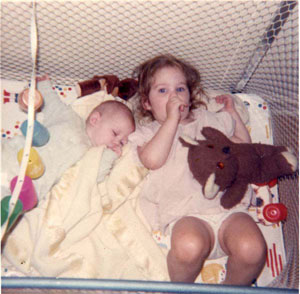 |
| HOME |
| GALLERIES |
| ARTIST STATEMENT |
| ABOUT THE ARTIST |
| ARTIST BIOGRAPHY |
| INFORMATION |
| CONTACT |
Encaustics (beeswax, pigment & resin) is known for permanence and resistance to damage from moisture, air and insects. Encaustics need not be varnished or placed under glass. Dust with a feather duster or gently spray with compressed air. Protect from extreme heat (above 140_ F) and cold (below 35_ F). Do not hang this medium or any fine art in direct sunlight.
Encaustic Mentors:
- Mary Black, Sebastapol, CA MaryBlack.net
- Paula Roland, Santa Fe, New Mexico PaulaRoland.com
- Sylvia Torres, Camarillo, CA SylviaTorres.com
ABOUT MIXED MEDIA: The term “mixed media” is commonly used to define works of art that combine different painting and drawing media. The combinations can include acrylic, watercolor, pastel, pencil, specialty papers, handmade paper, photographs, stamps and/or other media put onto the same surface.
It is an exciting and experimental working practice that allows for the combination of likely and unlikely media. As a result, it has allowed for the extension of drawing and painting techniques into areas of photography, printmaking, collage, frottage, montage, assemblage, and bas-relief construction.
Mixed Media Mentors:
- Hiroko Yoshimoto, Ventura, CA hirokoyoshimoto.com/index.html
- Debra McKillop, www.focusonthemasters.com/gallery/mckilop.html
ABOUT PRINTMAKING: Ever since ancient cave people used stenciling to produce impressions of their hands there have been printmakers. The earliest known relief prints are woodcuts dating from almost 2000 years ago in China, and from the medieval period onward many innovative printmaking techniques have appeared, such as engraving, etching, dry point, lithography, mezzotint, photogravure, screen printing and others, all of which have become part of the rich tradition of printmaking.
Fine art prints are generally multiple images from a single master metal plate or carved block. Each print is signed, titled and numbered by the artist just below the image area. I use a hand operated fine art etching press in my studio to create monoprints, monotypes, collagraphs, etchings and linocuts.
Monoprint or Monotype: An image is created with ink (I use both water based and oil based inks. Not together.) by rolling or brushing the ink on a non-absorbent surface such as Plexiglas or metal. The image is then transferred to paper with the use of a press. The monotype is a unique print made by means that permits only one impression and cannot be duplicated.
Monoprint - Vyco/Borco, Made by cutting into the broad face of a plank of wood. A linocut is worked in the same manner except that linoleum is substituted for wood.
The artist cuts away the areas which are to appear white in the final print using knives and gouges. The printing image is on top of the surface block. The negative area are carved away by the artist. Ink is applied with rollers or brayers to the flat upper surface of the block, then paper laid on the block and rubbed with a baren or spoon, or pressure is applied with a press.
Collagraphs: A collagraph is a collage of tactile and relief textures on a blank plate which when inked and printed will exaggerate the relief and transmit it to paper creating a rich and varied surface. The blank plate could be cardboard, metal, wood or plastic.
Solar Prints: Solar Prints were created by Dan Welden in 1972. It is a process used to transform original drawings, photocopies, digital images, and photography's into high quality, finished prints. The plates are made in the sun and developed in ordinary tap water, then printed on a press. These have an intaglio effect. (Intaglio: Ink is pushed into an incised areas and the surface of the plate is wiped clean. Damp paper is placed over the plate and covered with soft felt blankets, run through high pressure etching press. The fibers of the paper are forced into the recesses of the plate to pick up the ink.)
Printmaking Mentors:
- Cathy Day Barroca, Ventura, CA www.venturacountystar.com/news/2008/dec/31/printmaking-instructor- explores-bas-relief/ -
- Michael McCabe, Santa Fe, New Mexico
- Linda Taylor, Ojai, CA youtube.com/watch?v=OC30B4Cjfvw
ABOUT DIGITAL FINE ART: Computer art/original digital prints are artwork that is created entirely or largely on a computer. Digital Fine Art may be accomplished by electronic drawing, scanning individual elements then combining them electronically or generating an image with computer software.
I came to this discovery while cataloging my other creative attempts. For my Digital Fine Art, my personal original paintings and original photographs have been scanned (converted into a digital file), then altered with the use of image altering software. Many artists, including photographers are using the computer as a tool to change their original work, producing a unique piece of art, which in its self is an original.
